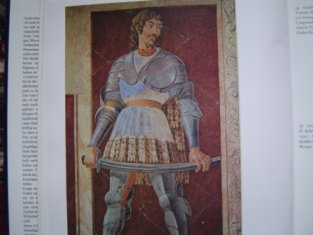| Victor Lavenstein wrote: |
| Greetings All. My first post here after much lurking.
Just thought I'd add this image of Saracens attacking with curved swords to the discussion. Perhaps this was a European artistic convention of the time, even though straight swords were the norm in the Middle East? http://www.publicsafety.net/image/knight_3.jpg Victor |
Welcome to the Forum. :D
Yes the curved sword on the right looks slimmer than a type XIV but also looks a bit like a curved European Sword: Maybe a curved type XV in the artwork ?
The type is sort of irrelevant, except that I want to mention seeing a specific resemblance, but the point is that it looks somewhat like a European sword drawn curved: The strait guard and round pommel mostly.
Would some period Middle eastern sword have actually looked very much like curved European swords around 1250 to 1350 before sabres are known to be common later on ?
The artist might have gotten the concept correct if the Middle Eastern swords of the period where often curved or maybe just commonly thought to be curved ? In many ways European falchions look a lot like the " Hollywood " idea of an oriental Cimeterre ( French spelling ). The artist may then have " imagined " a sabre based on what he knew ?
In any case , more speculations from me, and thanks for finding artwork to support further discussion(s). :D :cool:
